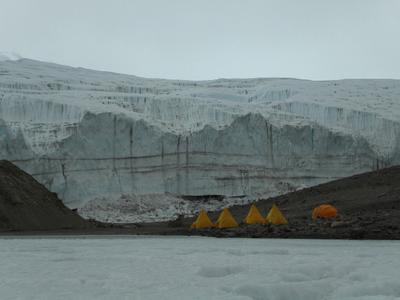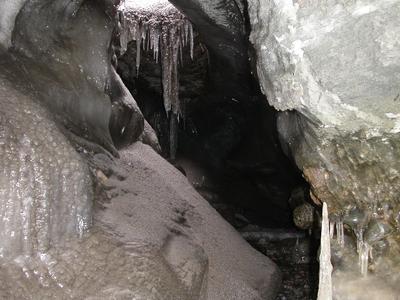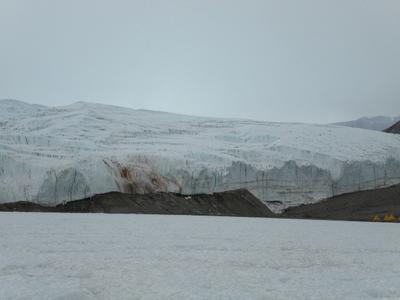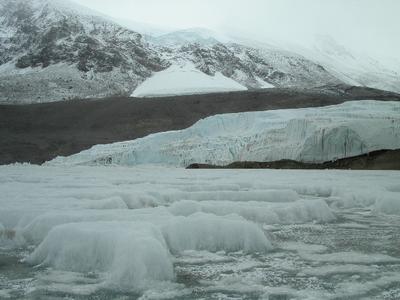21 January, 2003
The Ultimate Field Trip
You can learn a great deal in the classroom, but how can you substitute a
book for the real thing? The answer is that you can, but it certainly
doesn't make the same impression. I have read about glaciers, moraines,
deltas, icebergs, cinder cones, crevasses, and more. How do I begin to
describe what it is like to walk around these things and to see them first
hand? I want to share the grandeur of all this without it being just
another "book" for the learner. I'm not feeling very confident that I can
accomplish this and may devote the majority of this entry to photos. My
hope is that with these photos and a little imagination, some of you can
take yourself on a brief field trip to
the snout of a tremendous Antarctic ice form known as Taylor Glacier.
Chris and Brenda took us on a two hour walk along the snout of Taylor
Glacier where it runs into the west lobe of Bonney Lake. Our camp is pitched
right at the base of the glacier and the views are spectacular in every
direction. Behind our camp is Rhone Glacier and across the lake is Calkin
Glacier. Looking north is a great granite mountain with a dark black dike
running straight up the middle of the face. West is the amazing Beacon
Sandstone formation with the dolorite.

That mound is a delta. To the right is Rhone Glacier.

Aaron and others as we approach Taylor Glacier.

Our Lake Bonney camp on the west lobe at the base of Taylor Glacier.

A close up view of Blood Falls. Quite amazing up close as the red deposit stains the brilliant white.

A cave beneath the flank (side) of Taylor Glacier.

The 15,000 year old delta on the left, and Taylor Glacier on the right.

Aaron and others as we approach Taylor Glacier.

Taylor Glacier and Blood Falls that runs down the snout. The red color is caused by oxidized iron in the water.

A view from Lake Bonney looking at Taylor Glacier and Calkin Glacier.
Contact the TEA in the field at
.
If you cannot connect through your browser, copy the
TEA's e-mail address in the "To:" line of
your favorite e-mail package.
|
